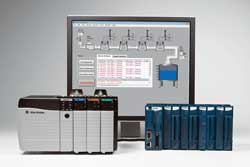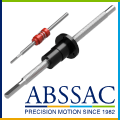
Posted to News on 8th Aug 2007, 19:40
LabVIEW 8.5 includes deterministic, real-time multithreading
National Instruments is launching LabVIEW 8.5, the latest version of the graphical system design platform for test, control and embedded system development. Building on nearly 10 years of investment in multithreading technology, LabVIEW 8.5 significantly reduces the programming complexity commonly associated with sophisticated control systems based on multicore and FPGA architectures. With the parallel dataflow language of LabVIEW, engineers can easily balance several measurement and control tasks between the multiple processor cores available on today's standard PC platforms. For added performance and reliability, LabVIEW 8.5 offers the following: deterministic, real-time multicore tools; new machine monitoring functions for both desktop and FPGA platforms; and expanded OPC connectivity to hundreds of industrial devices.

Dr James Truchard, National Instruments President, CEO and co-founder, comments: "Engineers and scientists depend on continually improving PC processors, operating systems and bus technologies to drive increased performance in their machine control systems. With the shift toward multicore processors on the PC, LabVIEW programmers benefit from a simplified graphical approach to multithreading, making it possible for them to maximise the performance of multicore technology with little or no change to their code."
LabVIEW for machine builders
Designers of industrial machines, robotics, mechatronics systems and industrial control applications can see performance gains from multicore technology by balancing parallel tasks, such as control loops, measurements and industrial communication, among multiple processing cores. Unlike sequential, text-based programming tools, the parallel dataflow language of LabVIEW with built-in multithreading naturally divides tasks across multiple processors. The latest version of LabVIEW delivers performance gains with deterministic real-time multithreading, improved thread-safe I/O drivers and automatic scaling based on the total available number of processing cores.
For prototyping and deploying deterministic and reliable industrial machines, LabVIEW 8.5 extends the performance of multicore applications to real-time embedded systems with symmetric multiprocessing in LabVIEW Real-Time. Engineers can manually assign portions of code to specific processor cores to fine-tune real-time systems or isolate time-critical sections of code on a dedicated core. To meet the more challenging debugging and code optimisation requirements of real-time multicore development, the new NI Real-Time Execution Trace Toolkit 2.0 visually displays timing relationships between sections of code and the individual threads, as well as processing cores where the code is executing.
The parallel nature of LabVIEW also applies to FPGA-based systems. LabVIEW 8.5 adds multichannel filtering and PID control algorithms to significantly reduce the FPGA resources required for high-performance machine control systems. In addition, the new LabVIEW FPGA Project Wizard automates I/O configuration, IP development and overall setup for common I/O, counter/timer and encoder applications. Using the FPGA Project Wizard, engineers can automate the generation of more complex high-speed DMA data transfer code.
New statechart module
Statecharts are commonly used to design state machines to model the behaviour of real-time and embedded systems to depict event occurrences and responses for designing digital communication protocols, machine controllers and system-protection applications. LabVIEW 8.5 adds a new statechart module to help engineers design and simulate these event-based systems using familiar, high-level statechart notations based on the Unified Modeling Language (UML) standard. Because the LabVIEW Statechart Module is based on the LabVIEW graphical programming language, engineers have a single platform to design, prototype and deploy their systems quickly, combining familiar statechart notation with real-world I/O running on deterministic real-time or FPGA-based systems.
Improved machine monitoring
LabVIEW 8.5 also adds enhanced vibration measurement and order analysis tools for industrial machine monitoring systems. For high-channel-count systems, the new multivariable editor makes it easy for users to quickly and easily configure or edit hundreds of I/O tags using a simple spreadsheet interface. Additionally, the latest version of LabVIEW introduces new flexible pipe display tools to simplify the process for building more realistic industrial user interfaces and an interactive drag-and-drop approach to tie I/O tags directly to user interface displays running on Windows CE-based industrial touch panels and handheld PDAs.
With LabVIEW, engineers can integrate more advanced programmable automation controllers (PACs) with existing programmable logic controller (PLC)-based systems, adding high-speed measurements and advanced control to their industrial systems. LabVIEW 8.5 adds a wide array of I/O, measurement and display enhancements for building PAC-based industrial systems including a new library of OPC drivers that expands industrial connectivity for LabVIEW users, nearly doubling the number of compatible PLCs and industrial devices.
Additional LabVIEW 8.5 features include:
- New Express VIs for image acquisition and machine vision
- Support for Freescale ColdFire processors and an evaluation bundle with QNX operating system support
- Project file management tools and graphical code merging for team-based development
- Low-level memory management tools for performance optimisation
- New optimised BLAS linear algebra libraries
- Improved edge detection algorithms for image processing and optimised algorithms for various demodulators and channel coding schemes
- Control design and simulation enhancements including Model Predictive Control (MPC) and analytical PID controller design
- Improved support of .m file scripts
Readers interested in learning more about LabVIEW 8.5 and downloading the evaluation software can visit www.ni.com/trylabview/.
Members of the LabVIEW service maintenance and support program will receive LabVIEW 8.5 automatically in the mail or can download the new version at the Services Resource Center at www.ni.com/src. Readers whose software is part of a company-wide Volume License Agreement (VLA) should contact their VLA administrators for special installation instructions.
To be one of the first to see and test drive LabVIEW 8.5, register for the NI LabVIEW 8.5 Roadshow, touring seven locations across the UK and Ireland during September, at www.ni.com/uk/labview. Alternatively, use the form on this page to request a callback or more information.
National Instruments Corporation (UK) Ltd
Measurement House, Newbury Business Park
London Road
RG14 2PZ
UNITED KINGDOM
+44 (0)1635 523545

































